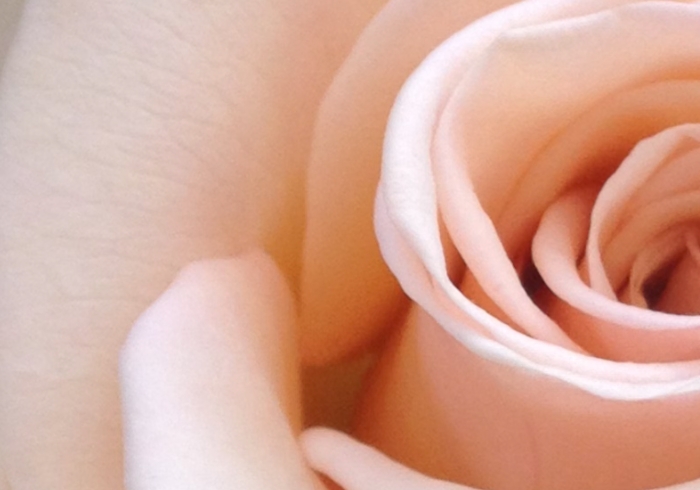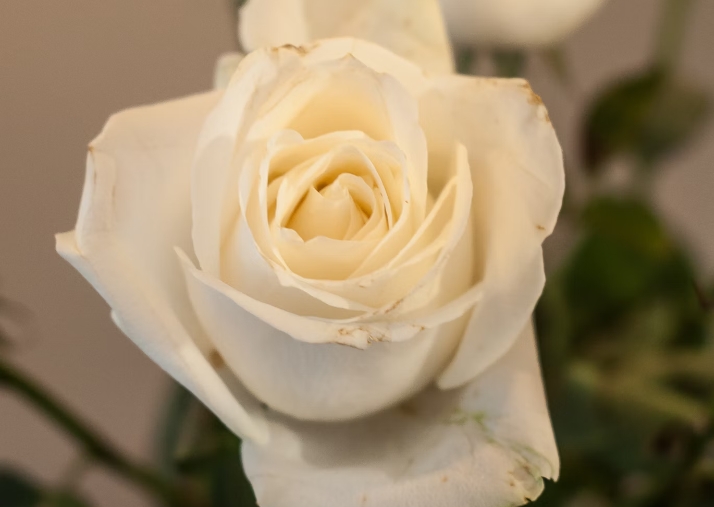When people ponder what kind of flowers or bouquets to choose for a funeral, respect and beauty become the key words that come to their minds. At the same time, many are also inquiring about which colors or types of flowers are most appropriate?
The flowers at a funeral are not only a tribute to the deceased but also a comfort for emotions, as many mourners may find it difficult to express their sorrow directly. Presenting a bouquet of flowers is a manifestation of respect, sympathy, and love for the deceased.
In fact, the bouquets and colors you choose for a funeral or memorial service carry specific meanings and significance behind them:
- Red flowers convey strength, respect, loyalty, and love with their vibrant color, making them a perfect choice to express deep respect.
- Blue flowers, with their tranquil tones, convey sadness, sympathy, and calmness, offering solace to the bereaved.
- Orange flowers, with their warm hues, symbolize enthusiasm, happiness, and warmth, bringing a touch of coziness to the mourning occasion.
- Purple flowers, with their deep shades, represent respect, sorrow, sympathy, and admiration, praising the high qualities of the deceased.
- Yellow flowers, with their bright colors, symbolize friendship, warmth, and hope, reminding us that even in sorrow, we can find the strength to move forward.
- Pink flowers, with their soft tones, represent elegance, sympathy, and innocence, paying tribute to the gentle nature of the deceased.
- Green flowers, with their vibrant colors, symbolize nature, health, and renewal, reminding us that life is a cycle of continuous change and renewal.
- White flowers, with their pure and flawless color, represent elegance, reverence, purity, and eternal love, offering the highest respect for the pure soul of the deceased.
Mteptech is a leading Chinese funeral equipment manufacturer with over fifty years of professional manufacturing experience. The company focuses on technological innovation and environmental protection, committed to developing and producing efficient, energy-saving, and eco-friendly funeral equipment. As an important enterprise in the industry, Mteptech not only has dual certifications of ISO9001 international quality system and ISO14001 international environmental system but is also a scientific research base designated by China's Ministry of Civil Affairs for the development of new cremation equipment and supporting equipment.

The company's product line includes intelligent IoT cremators, exhaust gas purification systems, cremated remains vacuum cleaners, AGV robot body transfer systems, etc., all of which use advanced technology and environmentally friendly materials to meet the market's demand for modern funeral services. With excellent product quality, innovation capability, and comprehensive after-sales service, Mteptech has won widespread recognition and trust from domestic and international customers. Its products not only serve the domestic market but are also exported to Southeast Asia and other regions, becoming an important force in promoting technological progress and green development in the funeral industry.
What Different Types of Funeral Flowers Represent (What Kind of Flowers Should Be Sent at Funerals)
Funeral flowers are not only a final farewell to the deceased but also carry memories, emotions, and respect for them. Different types of funeral flowers have different symbolic meanings, here are some common funeral flowers and their meanings:
- Daisies: With their simplicity and purity, daisies usually symbolize peace and hope, suitable for expressing remembrance of the deceased and good wishes for the future.
- Snapdragons: This flower, with its elegant posture and sense of strength, represents elegance and strength, suitable for commemorating those who have shown strength and elegance in life.
- Lavender: With its tranquil fragrance and color, lavender symbolizes elegance, purity, and loyalty, often used to express deep affection for the deceased and admiration for their qualities.
- Tulips: With a rich variety of colors, tulips represent love, peace, and hope, and can be used to express love for the deceased and hope for the continuation of life.
- Orchids: With their exotic and beautiful appearance, orchids symbolize hope, peace, courage, and love, suitable for commemorating those who are brave and full of love.
- Sword Lilies: With their upright posture, sword lilies represent strength and integrity, often used to express respect for the deceased and admiration for their integrity.
- Calla Lilies: With their unique shape, calla lilies symbolize resurrection and rebirth, often used in Christian funerals to express faith in eternal life.
- Yellow Lilies: Bright and elegant, yellow lilies represent gratitude, suitable for thanking the deceased for their good deeds and help to others during their lifetime.
- Irises: With their intricate and beautiful patterns, irises symbolize faith, hope, courage, wisdom, and admiration, suitable for expressing deep respect for the deceased.
- Carnations and Roses: The meanings of these two flowers vary according to their colors. For example, white carnations represent purity and maternal love, while red roses usually represent love and passion. When choosing carnations and roses, consider the personality and preferences of the deceased, as well as the traditional meanings of the flower colors.
When selecting funeral flowers, consider the personality of the deceased, their preferences in life, and the symbolic meaning of the flowers to ensure that the choice of flowers can appropriately express remembrance and respect for the deceased.
Roses
Roses are a common choice for funerals, and their different colors indeed carry a variety of emotions and symbolic meanings. Here is a brief introduction to the significance represented by different colors of roses:
- Red Roses: The intense color represents deep love, respect, and courage. At funerals, red roses can be used to express profound feelings for the deceased and pay tribute to their courage in life.
- Pink Roses: The soft pink color is usually associated with grace, tender love, and gratitude. Pink roses are suitable for commemorating those who exhibited delicate emotions and care in life.
- White Roses: White symbolizes purity and innocence, representing reverence, purity, peace, and hope. At funerals, white roses are often used to show respect for the deceased and to appreciate their pure qualities.
- Dark Red Roses: Dark red roses are sometimes seen as a stronger symbol of sorrow and grief. They can be used to express deep mourning for the deceased and the pain of loss.
- Black Roses: Although traditionally less common, black roses can represent the beginning of new things and significant changes. In some cultures, black roses are used to symbolize transformation and rebirth, expressing anticipation for a new chapter in the cycle of life.
When choosing roses for a funeral, the color selection should consider the memory of the deceased and the emotional message you wish to convey. The right color choice can help family and friends pay tribute to the deceased in a more meaningful and personalized way.
Carnations (All Carnations Symbolize Sympathy and Sorrow)
Carnations are widely used at funerals, known for their soft appearance and profound emotional symbolism. Here is a brief introduction to the significance of different colors of carnations and their symbolic role at funerals:
- Red Carnations: Red carnations express admiration and love for the deceased. This strong color can convey deep respect for the courage and love in the life of the deceased.
- Pink Carnations: Pink carnations are usually associated with memory, and they can be used to cherish and miss the gentle memories of the deceased.
- White Carnations: White carnations symbolize innocence and love, suitable for commemorating those who were pure and loving in life.
The use of carnations at funerals not only adds tranquility and harmony to the ceremony with their beauty and fragrance but also carries profound emotional and symbolic meanings. Each color of carnation can help express respect, love, and remembrance for the deceased.
Flowers indeed play an important role in commemorating the deceased. They symbolize the fragility and brevity of life and provide emotional comfort to those attending the funeral through their natural beauty. Funeral flower arrangements can alleviate visual and psychological burdens, offering a warmer and more reflective space for people to gather, remember the deceased, celebrate their life, and find inner peace and solace.
A Brief History of Funeral Flowers
Ancient Origins
- Neanderthal Burials: One of the earliest records of the use of funeral flowers comes from the Shanidar Cave in Iraq. Here, archaeologists found the skeleton of a male Neanderthal aged 30 to 45, buried in a fetal position, with pollen deposits of eight types of wildflowers around him. This suggests that the use of flowers and the importance of funeral ceremonies may be older than we know.
19th Century Funeral Flowers
- President Andrew Jackson's Funeral: Some believe that the funeral of President Andrew Jackson in 1874 was the first occasion to use funeral flowers to cover up the smell of decomposing bodies. Although this may be a notable example of funeral flowers in modern history, it is not the earliest record.
- The Role of "Flower Ladies": In 19th-century funerals, "Flower Ladies" played an important role. They were responsible for carrying flowers from the funeral home to the funeral procession and arranging flowers for the family at the cemetery. This role was considered as important as the pallbearers at the time, reflecting the symbolic and practical role of funeral flowers in the ceremony.
Symbolic Meaning of Funeral Flowers
- Covering Odors: In some cases, the use of funeral flowers may have been to cover the smell of decomposing bodies, especially in times without modern embalming techniques.
- Memory and Respect: Over time, the symbolic meaning of funeral flowers has transcended the need to cover odors. They have become a way to commemorate the deceased and express respect and emotions.
- Cultural and Religious Customs: Different cultures and religions have their own customs regarding funeral flowers. For example, in some cultures, specific flowers are believed to guide the souls of the deceased or symbolize eternal life.
The history of funeral flowers reflects humanity's attitude towards death and respect for the deceased. From ancient pollen deposits to the "Flower Ladies" of the 19th century, to modern funeral flower arrangements, funeral flowers have always been an indispensable part of memorial and farewell ceremonies.
Uses of Funeral Flowers
Funeral flowers play an important role in commemorating the deceased and expressing mourning. Here are some common uses and types of funeral flowers:
Uses of Funeral Flowers
- During the Wake: Funeral flowers are displayed during the wake to commemorate the deceased, providing a space for family and friends to contemplate and remember.
- Religious Services: At services held in churches, synagogues, or other religious venues, funeral flowers serve as symbols of reverence and respect.
- Decorating the Grave: Funeral flowers are used to decorate the resting place of the deceased, expressing respect and remembrance.
- Coffin Covering: Funeral flowers are placed over the coffin as a beautiful farewell, symbolizing the fragility and beauty of life.
Types of Funeral Flower Arrangements
- Crosses and Hearts: These shaped arrangements are often used to express deep mourning and endless love for the deceased.
- Standing Sprays: Standing sprays are placed in the funeral home or cemetery as a tribute to the life of the deceased.
- Coffin Sprays: Arrangements placed directly on the coffin, usually provided by the family or close friends, to express the most intimate mourning.
- Baskets: Flower baskets are a traditional form of funeral arrangement, suitable for various funeral occasions with their elegant and solemn appearance.
- Wreaths: Wreaths are commonly used to express respect and remembrance for the deceased, and they can be placed at the cemetery or as part of the funeral ceremony.
- Live Plants: Live plants, such as potted plants, symbolize life and rebirth, providing a lasting memorial for the family.
The Meaning of Funeral Flowers
Funeral flowers are not only a visual tribute to the deceased, but they also help express the pain and grief of losing a loved one. Through the selection and arrangement of funeral flowers, family and friends can find a way to remember the deceased, celebrate their life, and find some comfort in difficult times.
The use of funeral flowers is a global custom, and although specific traditions and preferences may vary by culture and personal beliefs, the core purpose is the same: to show the last respect and love for the deceased.
What Color of Flowers to Send at Funerals
When choosing the color of flowers for a funeral, it is important to consider the traditional symbolic meanings of colors and the emotional expression for the deceased and their family. Here are the general meanings and appropriate situations for different colored funeral flowers:
- Red Funeral Flowers: Red is a strong color representing strength and courage. It can be used to express respect, loyalty, and love for the deceased. Red flowers may be associated with passion and the power of life in some cultures.
- Blue Funeral Flowers: Blue is usually associated with sadness and tranquility, representing sympathy and calmness. They are suitable for expressing comfort and support for the deceased and their family.
- Orange Funeral Flowers: Orange is a warm color representing enthusiasm and happiness. Although less commonly used at funerals, orange flowers can be used to commemorate those who were full of vitality and optimism in life.
- Purple Funeral Flowers: Purple is a noble color often used to express respect and admiration. It is also associated with sadness and sympathy, suitable for commemorating the deceased and expressing respect for life.
- Yellow Funeral Flowers: Yellow symbolizes friendship and hope, often used to express remembrance of the deceased and an optimistic attitude towards the future. Yellow flowers can bring a touch of warmth and light to a funeral.
- Pink Funeral Flowers: Pink is a soft color representing elegance and innocence. They are suitable for commemorating those who were gentle and compassionate in life.
- Green Funeral Flowers: Green is closely related to nature and life, representing health and renewal. Green plants and flowers can symbolize the hope of life continuation and rebirth.
- White Funeral Flowers: White symbolizes purity and eternity, often used to express reverence and eternal love for the deceased. White flowers are a traditional choice for funerals in many cultures, suitable for commemorating the purity and nobility of the deceased.
When choosing the color of funeral flowers, the most important thing is to consider the personality of the deceased, their preferences in life, and the emotional needs of the family. The right color choice can help express respect for the deceased and provide emotional comfort to the family. Additionally, flower colors can be chosen based on the individual's relationship with the deceased and the specific message they wish to convey.



